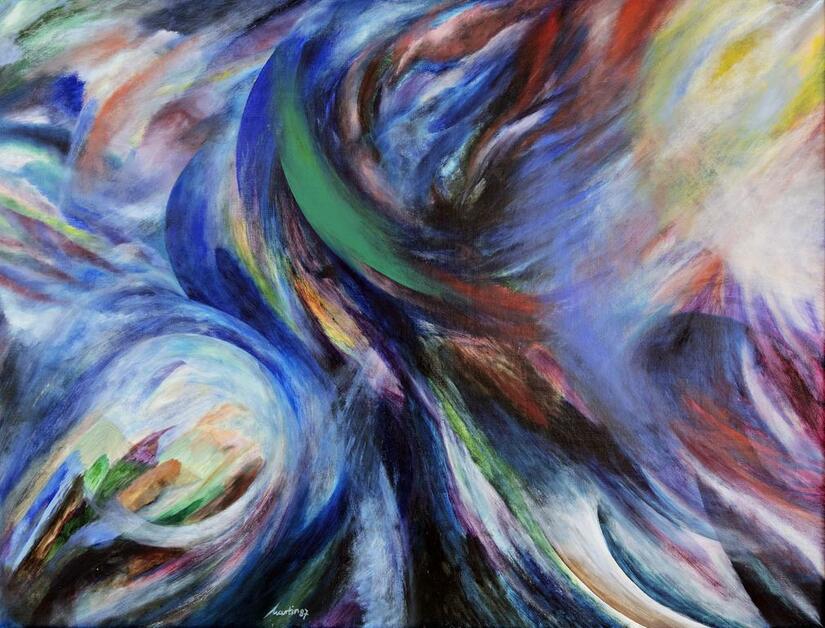Martin Rabe: Erde und Ewigkeit, 1987 (Earth and Eternity)

Oil on canvas, 114 x 85 cm
Does the earth exist eternally, do time and the universe have a beginning and an end? These questions belong to the great natural-philosophical themes that philosophers, theologians and natural scientists have been dealing with from antiquity to the present day. Martin Rabe (*1942) also reflected on these questions and translated them, artistically: a fragile-looking earth floating in an empty space, difficult to grasp. Did Rabe orient himself more towards philosophical or scientific questions? Both are true: The theological answer to the question of eternity is that God is eternal and creation - to which man belongs - is finite in contrast to him. The scientific question, in a broader sense, is how "eternal" the Earth will still be - at least the one we know. The answers to these questions touch very concretely on the issue of sustainability: Like all living beings in this world, man as an individual is finite, but what about the finiteness of humanity, which is in the process of destroying the basis of life? In contrast to this is the eternity of the Earth, which will continue to exist - in whatever balance of nature -, even if humanity has possibly already become history.
Martin Rabe's studies took him to Stuttgart and Vienna: painting, plastination and art history were on the curriculum. The versatile Martin Rabe also studied theatre and stage design, literature and music. He published books, including a History of European Art and the series "Illustrated Classics of World Literature".